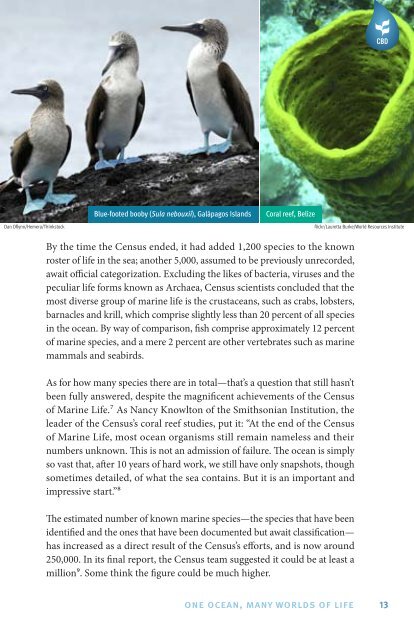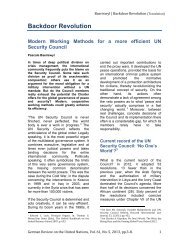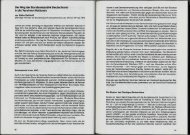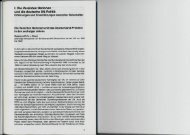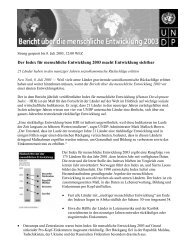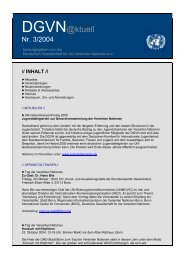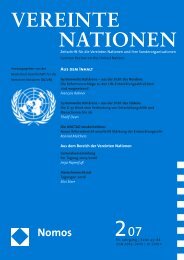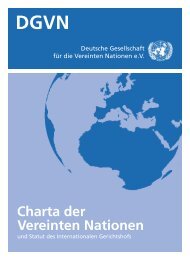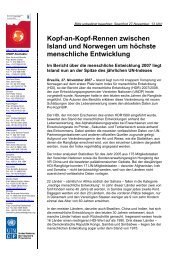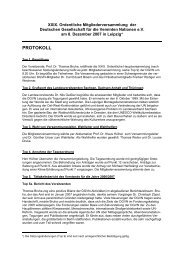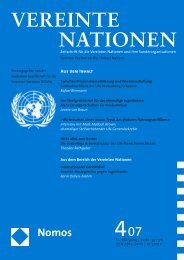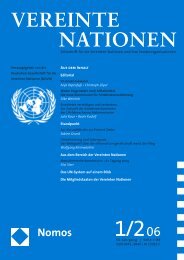One Ocean, Many Worlds of Life - Convention on Biological Diversity
One Ocean, Many Worlds of Life - Convention on Biological Diversity
One Ocean, Many Worlds of Life - Convention on Biological Diversity
Create successful ePaper yourself
Turn your PDF publications into a flip-book with our unique Google optimized e-Paper software.
Blue-footed booby (Sula nebouxii), Galápagos Islands Coral reef, Belize<br />
Dan Oflynn/Hemera/Thinkstock flickr/Lauretta Burke/World Resources Institute<br />
By the time the Census ended, it had added 1,200 species to the known<br />
roster <str<strong>on</strong>g>of</str<strong>on</strong>g> life in the sea; another 5,000, assumed to be previously unrecorded,<br />
await <str<strong>on</strong>g>of</str<strong>on</strong>g>ficial categorizati<strong>on</strong>. Excluding the likes <str<strong>on</strong>g>of</str<strong>on</strong>g> bacteria, viruses and the<br />
peculiar life forms known as Archaea, Census scientists c<strong>on</strong>cluded that the<br />
most diverse group <str<strong>on</strong>g>of</str<strong>on</strong>g> marine life is the crustaceans, such as crabs, lobsters,<br />
barnacles and krill, which comprise slightly less than 20 percent <str<strong>on</strong>g>of</str<strong>on</strong>g> all species<br />
in the ocean. By way <str<strong>on</strong>g>of</str<strong>on</strong>g> comparis<strong>on</strong>, fish comprise approximately 12 percent<br />
<str<strong>on</strong>g>of</str<strong>on</strong>g> marine species, and a mere 2 percent are other vertebrates such as marine<br />
mammals and seabirds.<br />
As for how many species there are in total—that’s a questi<strong>on</strong> that still hasn’t<br />
been fully answered, despite the magnificent achievements <str<strong>on</strong>g>of</str<strong>on</strong>g> the Census<br />
<str<strong>on</strong>g>of</str<strong>on</strong>g> Marine <str<strong>on</strong>g>Life</str<strong>on</strong>g>.7 As Nancy Knowlt<strong>on</strong> <str<strong>on</strong>g>of</str<strong>on</strong>g> the Smiths<strong>on</strong>ian Instituti<strong>on</strong>, the<br />
leader <str<strong>on</strong>g>of</str<strong>on</strong>g> the Census’s coral reef studies, put it: “At the end <str<strong>on</strong>g>of</str<strong>on</strong>g> the Census<br />
<str<strong>on</strong>g>of</str<strong>on</strong>g> Marine <str<strong>on</strong>g>Life</str<strong>on</strong>g>, most ocean organisms still remain nameless and their<br />
numbers unknown. This is not an admissi<strong>on</strong> <str<strong>on</strong>g>of</str<strong>on</strong>g> failure. The ocean is simply<br />
so vast that, after 10 years <str<strong>on</strong>g>of</str<strong>on</strong>g> hard work, we still have <strong>on</strong>ly snapshots, though<br />
sometimes detailed, <str<strong>on</strong>g>of</str<strong>on</strong>g> what the sea c<strong>on</strong>tains. But it is an important and<br />
impressive start.”8<br />
The estimated number <str<strong>on</strong>g>of</str<strong>on</strong>g> known marine species—the species that have been<br />
identified and the <strong>on</strong>es that have been documented but await classificati<strong>on</strong>—<br />
has increased as a direct result <str<strong>on</strong>g>of</str<strong>on</strong>g> the Census’s efforts, and is now around<br />
250,000. In its final report, the Census team suggested it could be at least a<br />
milli<strong>on</strong>9. Some think the figure could be much higher.<br />
<str<strong>on</strong>g>One</str<strong>on</strong>g> <str<strong>on</strong>g>Ocean</str<strong>on</strong>g>, <str<strong>on</strong>g>Many</str<strong>on</strong>g> WOrlds Of life<br />
13


